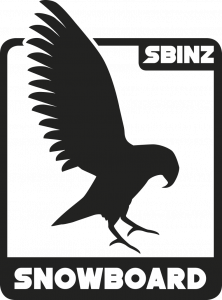Snowboards first began appearing in the 1960s. Since then they have progressed through many eras and had many influences. The basic makeup of a snowboard includes the nose and tail, base and top-sheet, waist and side-cut, edges, and the inserts where the bindings go.
There are many different measurements that apply to snowboards, helping to give each snowboard different riding characteristics. It should be noted that new technology and concepts are continually coming into the marketplace, some will be around forever, while others are fads or become outdated and will disappear.
Snowboard Shape & Flex
The shape and flex of a snowboard is crucial to its purpose. On one extreme we have alpine race snowboards, with flat tails, short noses, long effective edges and a very stiff flex pattern. At the other end of the spectrum we have “jib-sticks”, which are much shorter in length, have an identical shape in the nose and tail, and are much softer in flex. In between, there are many variations, from tapered powder-specific models to standard all-mountain snowboards.
The flex of a snowboard is dictated by the core materials used in its design and manufacturing. Most snowboards have a directional flex pattern, meaning the tail is usually slightly stiffer than the nose. Snowboards described as “twin” are typically twin in shape but still directional in flex. That said, there are some “true twin” snowboards out there that have an even flex in the nose and tail as well as a twin shape. These snowboards are specifically designed for park riding.
Torsional Flex
Snowboards have another form of flex known as torsional flex or torsional stiffness. This is the amount a snowboard can twist. Torsionally softer models, such as beginners’ snowboards, are easier to ride at slower speeds, but they provide less edge grip when riding at higher speeds. Higher-end models and freeride, pipe or race-specific snowboards are torsionally stiffer.

Variations of Camber
Camber refers to the bend of the snowboard from nose to tail.
Positive Camber Snowboards
Traditionally, snowboards have a positive camber, meaning that if it were to lay flat, the snowboard comes off the ground in the middle between the contact points. This camber provides resistance when flexed and tilted onto an edge, and rebound when unweighted aggressively. Cambered boards generally feel very responsive and stable when riding and are the predominant choice for most advanced riders.

Reverse Camber Snowboards
Reverse camber snowboards, also known as “rocker”, start by lying flush in the middle, and elevate as they progress towards the nose and tail. Designers state that this reverse arch is in the same shape as a turn. Therefore, when the snowboard is put on edge, it naturally falls into the correct position for a turn. Reverse camber snowboards are known to provide a more buttery/surfy feeling, but are typically less responsive.
Multi-Camber & Zero Camber Snowboards
Multi-cambered snowboards offer combinations of cambered and reverse cambered areas. The placement of these areas depends on the outcome the manufacturers are trying to achieve.
Some multi-camber profiles include:
- Reverse camber between the feet, with regular camber from the feet out towards the nose and tail.
- Camber between the feet, with a slight spoon-shaped reverse camber under the nose and tail.
- Zero camber, which is completely flat throughout, with no camber at all.
- Flat or camber between the feet, with reverse camber from the feet outwards (as shown below).

Side-Cut & Edges
The edges of the snowboard are curved concavely, so that the width at the nose and tail is greater than the centre. This curve aids turning and affects the snowboard’s handling. The curve has a radius that might be as short as five metres on a child’s snowboard or as large as 17 metres on a racer’s snowboard. Most snowboards use a side-cut radius between eight and nine metres. Smaller side-cuts (for tighter turns) are generally used for all-mountain riding while longer side-cut radii (for wider turns) are used for racing. Freestyle-specific boards are typically somewhere in between; however, some halfpipe boards have recently been designed with longer side-cuts too.
Tri-Radial Side-Cut
The tri-radial side-cut makes use of three different side-cuts. Not all tri-radial side-cuts work in the same exact manner, but the basic concept is this: A moderate centre radius helps to stabilise the snowboard at higher speeds, whereas a more aggressive radius helps to initiate or complete turns faster.

Asymmetrical or Off-Axis Side-Cut
These boards have two separate side-cut radii. The heelside edge will have a smaller radius than the toeside edge. The side-cuts may also be offset. This is to help make it easier to create a heel turn that is a similar size to the toe turn.
Magne-Traction
This incorporates several bumps on each side of the snowboard which are designed to improve edge-hold by having more contact points with the snow. The idea is similar to a serrated knife. Magne-Traction was designed by Mervin Manufacturing, who manufacture Lib Tech, GNU and Roxy snowboards. Several other manufacturers have created their own variations of this concept, such as Jones Snowboards.

